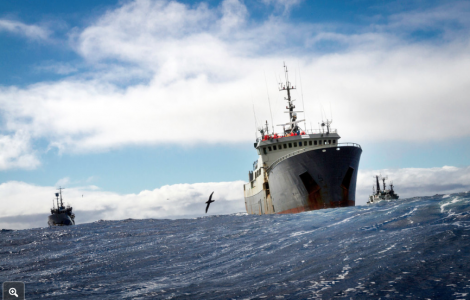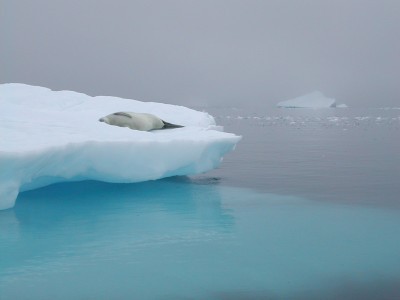Midge Raymond's Blog, page 13
September 7, 2015
Writing Prompt: Water
September 2, 2015
Book publishing in Antarctica
Of all that Antarctica is known for, who knew it was once a publishing hub? (Well, sort of.)
I’ve been reading about the Aurora Australis — the first book ever written, printed, illustrated, and bound in Antarctica — soon to be offered at auction by Sotheby’s and expected to bring in £70,000.

Photo from The Guardian.
Aurora Australis was produced during Shackleton’s Nimrod Expedition of 1908–09, at Cape Royds on Ross Island in the McMurdo Sound. It was one of many activities Shackleton encouraged of his team so that “the spectre known as ‘polar ennui’ never made its appearance.”
What’s interesting is that by the time this book was created, publishing was not a new thing in the polar regions. Already explorers were publishing articles and newspapers detailing their expeditions — from Edward Parry’s 1819 expedition in search of the Northwest Passage to the South Polar Times, published during Robert Scott’s Discovery and Terra Nova expeditions. And now, of course, you can go online to read the news of what’s happening in Antarctica — for example, The Antarctic Sun, published by the U.S. Antarctic Program; and blog posts from the British Antarctic Survey.
Shackleton’s Nimrod expedition was sponsored by a printing firm, and Shackleton received training and traveled south with a printing press and paper. (Click here to learn more about the challenges of printing in the extreme temperatures of the Antarctic.)
Aurora Australis, which will be auctioned in London on September 30, is 120 pages long and contains poems, stories, essays, and illustrations by ten members of the expedition. Horse harnesses were recycled to create the leather spines, and the covers of the copy up for auction were made from a tea chest. Only eighty copies of the book were printed.
Tweet

August 24, 2015
Writing Prompt: Late summer
August 10, 2015
Writing Prompt: Regrets
July 29, 2015
Pirates v. pirates on lawless oceans
It’s been great to see stories about illegal fishing on the front pages of two major newspapers over the past week. Overfishing is one of the biggest dangers facing our oceans … and yet, often there is little that can be done, as this front-page Los Angeles Times story points out. This is why the Sea Shepherd Conservation Society’s work is so vital; as the organization puts it: “It takes a pirate to catch a pirate.”
The LA Times story focuses on the Kunlun, “a decrepit fishing vessel, its huge white hull streaked with filth and rust,” which was suspected of holding $5 million worth of illicit Patagonian toothfish, better known by its more user-friendly name “Chilean sea bass,” a fish whose stocks have been dangerously depleted due to overfishing and is now considered a threatened species. After the market for Chilean sea bass boomed in the 1990s, by the year 2000 twice as much of the fish was being caught illegally.
This article, as well as yesterday’s New York Times cover story, feature the Sea Shepherd’s efforts to end illegal fishing (as well as whaling and other atrocities against marine life) in international waters where poachers are rampant. The NYT piece focuses on the Sea Shepherd’s 110-day pursuit of the Thunder, a trawler considered the world’s most notorious fish poacher, via the Bob Barker.
As the Times points out:
Industrial-scale violators of fishing bans and protected areas are a main reason more than half of the world’s major fishing grounds have been depleted and by some estimates over 90 percent of the ocean’s large fish like marlin, tuna and swordfish have vanished. Interpol had issued a Purple Notice on the Thunder (the equivalent of adding it to a Most Wanted List, a status reserved for only four other ships in the world), but no government had been willing to dedicate the personnel and millions of dollars needed to go after it.
So Sea Shepherd did instead, stalking the fugitive 202-foot steel-sided ship from a desolate patch of ocean at the bottom of the Earth, deep in Antarctic waters, to any ports it neared, where its crews could alert the authorities.
It’s wonderful to see the Sea Shepherds getting such positive press for the important work they do. “Maritime lawyers question whether the group has legal authority for its actions — ranging from cutting nets and blocking fishermen to ramming whaling vessels — but Sea Shepherd claims its tactics are necessary. So do some Interpol officials.” In waters where no Coast Guard exists and where poachers will change a ship’s name and port registry up to a half-dozen times, as Australian senator Peter Whish-Wilson told the Times, “Sea Shepherd is doing what no one else will.”
Learn more about the Sea Shepherds and how they help protect the oceans … and, even better, help solve the problem at its roots by not eating fish (this article makes a good case for avoiding fish; these 99 reasons not to eat fish include endangered species as well as important health concerns; and this infographic shows the environmental and ethical impacts of the seafood industry).
Tweet

July 27, 2015
Writing Prompt: Humor
Write about something you found funny but someone else did not. Create a scene around this incident. Next, write about something that someone else joked about that you did not find amusing yourself.
Tweet

July 22, 2015
Antarctica is hot (and not in a good way)
From being a popular tourist destination (IAATO estimates the numbers of visitors expected in the upcoming 2015-2016 will be an astonishing 40,029) to the actual warming temperatures in the sea and air, Antarctica is hotter than ever. And this doesn’t bode well for the future of the continent or the planet.
While on one hand, the increasing tourism could be a very positive thing — but only if visitors return from Antarctica with a new vision of climate change and a commitment to do their part. On the other hand, the more feet on the ground in Antarctica, the more strain on the wildlife and native landscape. (Click here to check out John Oliver’s hilarious anti-tourism PSA).
And regarding the melting of the ice sheet, this article in OnEarth Magazine puts it very well:
If you want to cook something quickly, you heat it from both sides. This is the genius of the toaster. That’s what’s happening to the West Antarctic ice sheet—with alarming consequences…Think of it as the world’s largest panini press.
In addition to news about the geothermal energy melting the ice from the water below, as well as from the warming temperatures above, is the appearance of king crabs in Antarctica — a species that until 2003 had previously been unable to survive in Antarctica’s icy waters. Now, as this article in The Conversation notes, “[t]hey are seemingly marching up the continental slope and towards the continental shelf, with nothing to stop them…In the Antarctic, the native inhabitants are particularly at risk. These animals have evolved without any major predators for millions of years.”
And this week, former NASA scientist James Hansen has announced a study that outlines a scenario of rapid sea level rise as well as intense storms. As the Washington Post reports:
“If the ocean continues to accumulate heat and increase melting of marine-terminating ice shelves of Antarctica and Greenland, a point will be reached at which it is impossible to avoid large scale ice sheet disintegration with sea level rise of at least several meters,” the new paper says.
It’s all frightening news, and it’s only getting more urgent. So what can we do?
Visit sites like Antarctic Alliance, Penguin Sentinels, and the Sea Shepherd Conservation Society to learn about what dangers the oceans face and how to protect the seas and their creatures.
Watch films. A few eye-opening examples include Cowspiracy , which exposes one of the leading causes of climate change; Chasing Ice; and this episode of HBO’s Vice.
Be as green as you can, in whatever ways you can (from food to recycling to water use), and vote with the future of the planet in mind.
Tweet

July 16, 2015
Meet Turbo the Penguin
One of the great joys of volunteering with the Center for Penguins as Ocean Sentinels to help count Magellanic penguins was meeting Turbo.
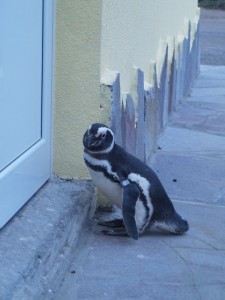
He’s a unique bird in so many ways, and beloved even by those who have never met him. He got his name the year he decided to nest under a Ford Turbo instead of in a burrow or under a bush like most of his species. And while most penguins will scurry away at the sight of humans, Turbo would walk right up to you, and he even liked being patted on the head (which made the neighbor cats a little jealous).
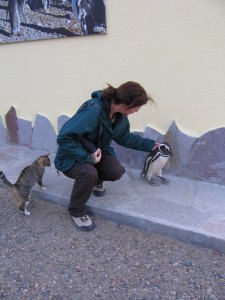
Each year, I eagerly await news from the penguin program about what’s new the colony, but especially for news of Turbo. There’s a lot going on with the Magellanic colony where he lives — the colony is in decline due to such factors as oil pollution, overfishing, and climate change — but hearing news of Turbo each season gives me hope that these magnificent birds will make it in the end.
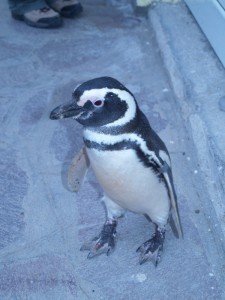
Researchers believe that Turbo is now about 11 years old. This season, he found himself a wonderful nest in a big molle bush, and we’re all hoping this will help him find a mate. (Yes, he’s still single after all these years.)
Visit the Center for Penguins as Ocean Sentinels to sign up for news and updates, and you can also keep up with Turbo via Facebook.
Tweet

July 13, 2015
Writing Prompt: Jobs
If you could change careers, what would you do instead? Write about what your new job/life would look like.
Tweet

June 29, 2015
Writing Prompt: Abroad
If you could live in a foreign country, where would you choose? Imagine where you would be, and write about your life there, in as much detail as possible.
Tweet






